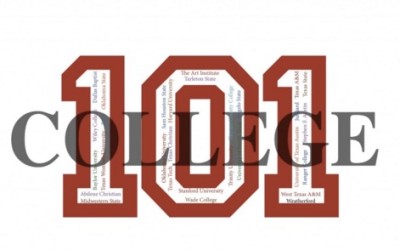Salerno correctly observes “Higher education isn’t the only market where consumers typically buy things by going into debt. Millions of people finance new and used cars every year at levels similar to what typical undergraduates borrow, and most homebuyers end up with six-figure mortgages…One reason lenders don’t need to offer such programs is that there’s a car or a house that can be reclaimed when non-payment occurs. The other is that insurance markets help lenders cover the risk of nonpayment, like private mortgage insurance, or to deal with cases where assets lose value before the loan’s paid off, like buying full-coverage insurance on financed cars.”

Carlo Salerno, is an education economist who is focused on college access, completion, and affordability, wrote an excellent article in Forbes recently titled “Solving the College Affordability Problem with Student Loan Insurance.”
The article discusses the growing use of by the Department of Education of income-based repayment (IBR) plans that cap monthly payments and eventually forgive any outstanding balances. The cost of these programs is growing and with more than a $20 billion-per-year price tag and it is unclear the direct link to increasing college affordability.
So it is a good question to ask – why not apply this model to student loans?
This discussion is worth considering. What would happen if the Department of Education replaced IBR with student loan insurance? Would it help fix a major problem that plagues student loan servicing? Would it help delinquent borrowers or create some new form of unintended risk.
According to Salerno – “credit insurance for education isn’t a new idea; the U.K. has long let consumers buy Payment Protection Insurance. Students could buy insurance when they sign their master promissory note for that year’s federal student loans. It may be as simple as a check-this-box option on the form itself, but more likely people would have the choice to shop the same way they can for health insurance. Borrowers could make a one-time premium payment that they could roll directly into the loan, again similar to private mortgage insurance.”
Ultimately – the use of insurance also begs the question – who will pay the insurance premium. Some new innovative programs involve schools buying “under-employment / student loan” insurance. These programs are used as part of the admissions efforts under brands called LRAP (Loan Repayment Assistance Program) and HELP (Higher Education Loan Protection). It is also worth recalling that just 7 years ago, under the former federal student loan program – a percentage of the cost of loans originated were paid to non-profit guarantee agencies (such as USA Funds) for each student loan. This provided a market-based remedy to address and fund losses from defaulted student loans. Part of any solution, it seems would require the schools to have some investment so that they would recognize the cost of
A fundamental problem today is that schools do not have skin-in-the game. Given that a majority of student loan defaults are from students who did not graduate it seems vital to calculate the cost of non-graduation into the cost of funding that schools otherwise benefit from in the form of a student loan. As a result, it seems prudent to consider why it is acceptable to place 100% of the burden of a student loan on a student when the school received the financial benefit and would potentially act differently if they shared the risk of student success.
As a result, it seems prudent to consider why it is acceptable to place 100% of the burden of a student loan on a student when the school received the financial benefit and would potentially act differently if they shared the risk of student success.
College Parents of America welcomes this discussion. It is timely for the United States to consider how we increase the capacity of our citizens to contribute and compete in a global economy. We welcome your thoughts and feedback as to what policy positions we as an organization can continue to articulate.



